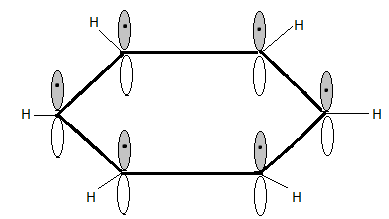Question
Question: Why is phenyl carbocation unstable?...
Why is phenyl carbocation unstable?
Solution
To solve this question we should know about:
A chemical that is stable is unreactive, while an unstable chemical is reactive. The Unequal Distribution of Electrons (UDED) in a chemical species determines reactivity (molecule, atom, and ion). This is how "unreactive" chemical species behave. Like the compressed atmosphere in a sealed cylinder, their electrons are securely confined by their nuclei. To make it explode, you'll probably need a big fire (a lot of energy) in the room (react)
Complete answer:
The creation of a phenyl cation might be thought of as
C6H5−H→C6H5+H+e−
The benzene C−H bonds are sp2 hybridized.
Because the electrons are closer to the nucleus with a high s character, we must use more energy to remove them and break the bond.
Ethane, for example, requires 423KJmol−1 to break the C-H bond, but benzene requires 470KJmol−1 .
Furthermore, the unoccupied sp2 orbital is in the ring's plane.
Because it can't overlap with the system's π orbitals, it can't be stabilized via resonance.
The phenyl cation is an unstable, high-energy species.

Because of the high bond energy of the aromatic C−H bond, the phenyl carbocation is unstable.
Note:
Because the phenyl cation core has two ligands but no lone pairs, sp is the most stable hybridization. Of course, it's not genuinely sp because it can't take on a linear geometry, but it's also not sp2 because the bond angle is greater than 120°.
